How to Make Lava Lamps Bloop Again
Do y'all know how to brand a lava lamp? DIY lava lamps are i of our favourite science experiments as they are super unproblematic to make, tin be used over and again and yous tin be a artistic as you like with them. We've fabricated Minions, Reindeers and even Snowmen lava lamps!
Lava lampsouth are also a rubber, exciting and visual way to introduce chemical reactions and the often tricky concept of density to children ( the oil floats beautifully on elevation of the water ).
How to make a lava lamp
What you need to brand a lava lamp
- A clear plastic or glass bottle or jar
- A bottle of vegetable oil
- Water
- Alka Seltzer
- Nutrient colouring (a bright colour is best!)
DIY Lava Lamp instructions
Fill the bottle about a quarter full with h2o. Elevation up to the (near) top with the vegetable oil.
The oil and water should separate into two layers, water at the lesser and oil on the meridian.
Once the oil and water accept separated, add together plenty food colouring to get the colour you want. The colour volition mix with the water at the bottom.
Pop in half an alka seltzer tablet and watch the bubbles class. Add more than alka seltzer little by piddling to continue the bubbles rising and falling.
Top Tips for making a DIY lava lamp
Try using effervescent vitamin tablets instead of alka seltzer, these are usually a bit cheaper and have the same upshot, although they might colour the h2o slightly.
More science experiments to try
What happens if you apply one-half a tablet? Or two?
Once the reaction has finished, try gently tipping the bottle on its side. What do you notice?
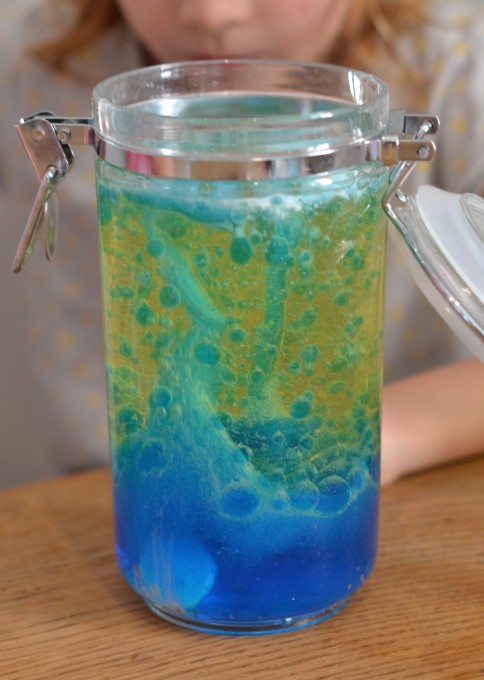
Why do homemade lava lamps work?
Alka seltzer is made of citric acid and sodium bicarbonate which react with the water to form carbon dioxide gas and sodium citrate. It is the bubbles of carbon dioxide that deport the coloured water into the oil giving a lava lamp upshot.
NOTE – Please supervise the use of alka seltzer and effervescent vitamin tablets.
Why do oil and water split?
Water and oil do not mix. This is because water is a polar molecule – it's structure means that is has a positive charge one stop and a negative charge the other. H2o molecules stick together because the positive terminate of one h2o molecule is attracted to the negative terminate of some other. Oil molecule structure is different – information technology is not polar meaning that its charge is more evenly spread out, and then the oil is non attracted to water – in fact we call it hydrophobic (water fearing) so it tries to get every bit far away from water every bit possible and will not mix. The reason that oil rests on pinnacle of the h2o rather than underneath is considering information technology has a different density to water.
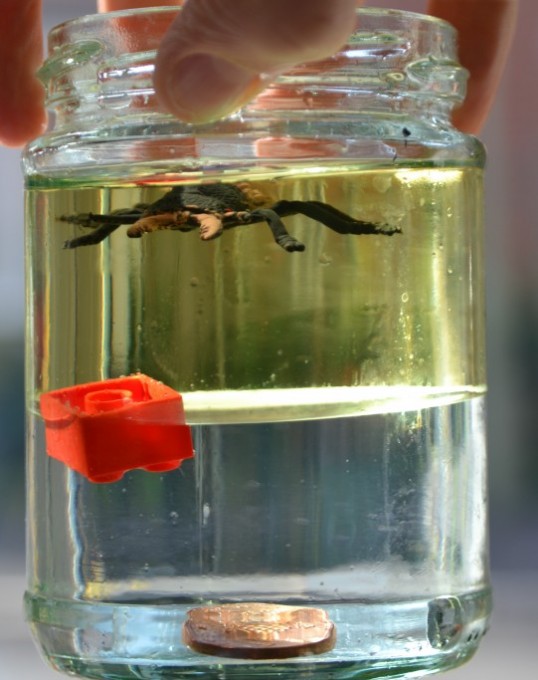
More than DIY lava lamp ideas
How well-nigh a pumpkin themed lava lamp for Halloween? These would make a great last minute pumpkin or a fun alternative if y'all don't fancy carving one this year.
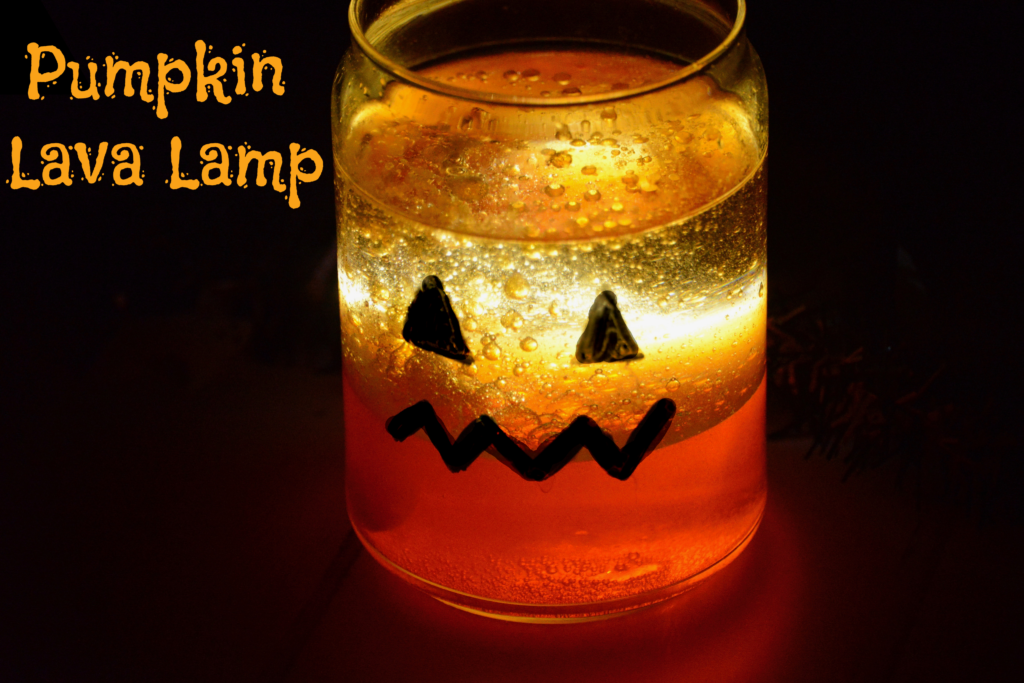
We had a lot of fun making our Minion version. If I did this once again I'd use blueish water at the bottom as yous couldn't really meet the yellow very well in the oil.
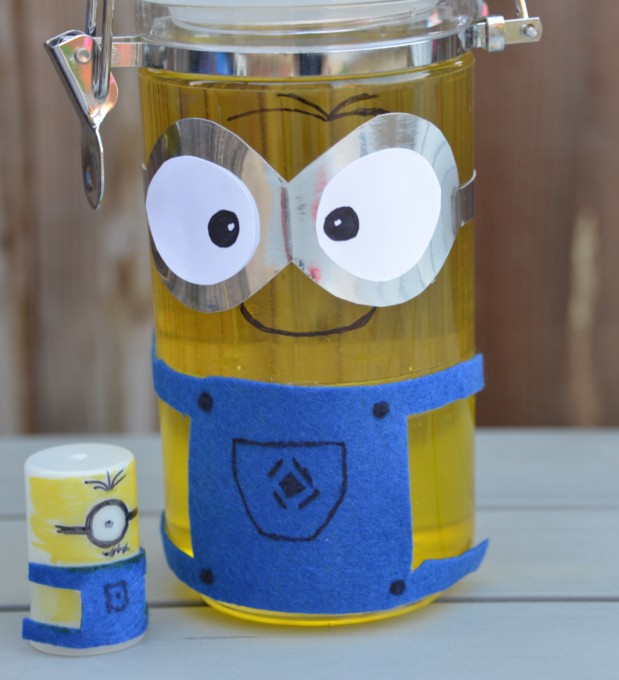
Or how about a Christmas Lava Lamp? Our reindeer and snowman were super cute and a big hit with the kids terminal year.
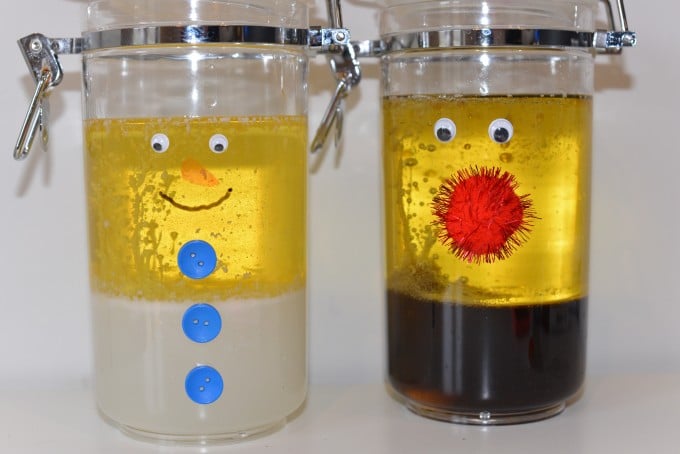
If you enjoyed this action you'll love our other experiments for kids. We've got 100s of different science based investigations and activities, with something for all interests and ages.
The Royal Institution has a slap-up lava lamp and other fab experiments too!
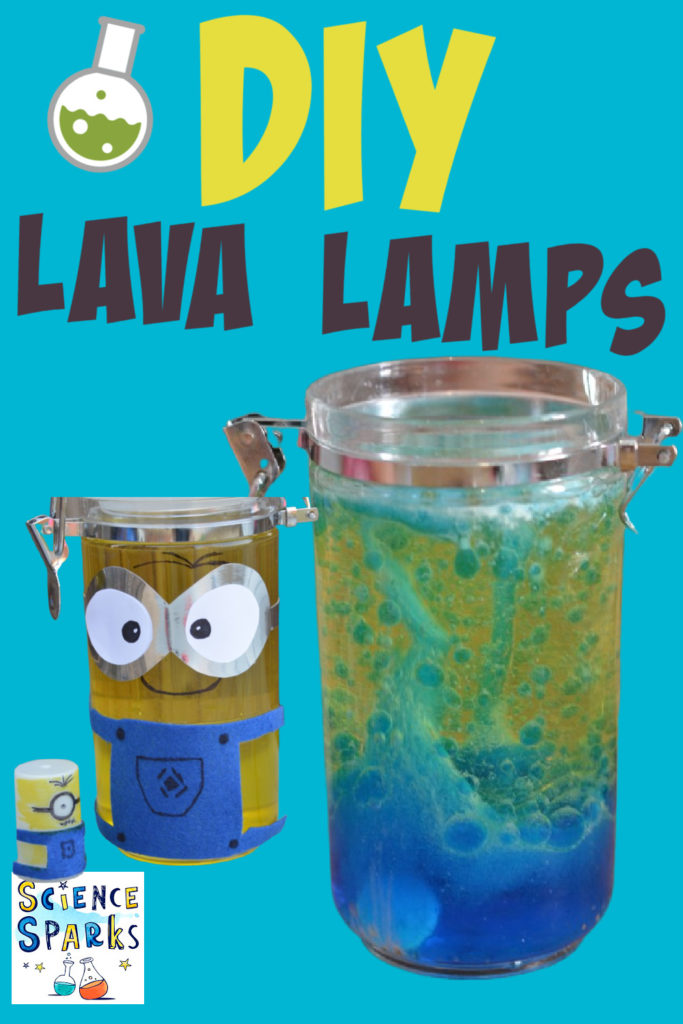
Don't forget I too take some science books available likewise. Snackable Science contains 60 fun edible experiments while This IS Rocket Science takes you on a journey into infinite, around the solar system and back down to Earth with Seventy fun and easy activities!
Last Updated on April 30, 2021 by
Reader Interactions
Source: https://www.science-sparks.com/how-to-make-a-lava-lamp/